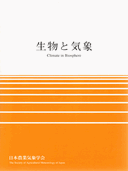12 巻
選択された号の論文の8件中1~8を表示しています
- |<
- <
- 1
- >
- >|
研究論文
-
2012 年 12 巻 p. 1-5
発行日: 2012年
公開日: 2012/03/21
PDF形式でダウンロード (769K) -
2012 年 12 巻 p. 6-11
発行日: 2012年
公開日: 2012/04/20
PDF形式でダウンロード (1907K) -
2012 年 12 巻 p. 12-20
発行日: 2012年
公開日: 2012/05/31
PDF形式でダウンロード (1239K) -
2012 年 12 巻 p. 36-45
発行日: 2012年
公開日: 2012/08/10
PDF形式でダウンロード (1110K) -
2012 年 12 巻 p. 52-58
発行日: 2012年
公開日: 2012/08/10
PDF形式でダウンロード (1193K)
短報
-
2012 年 12 巻 p. 59-64
発行日: 2012年
公開日: 2012/11/22
PDF形式でダウンロード (913K)
資料
-
2012 年 12 巻 p. 46-51
発行日: 2012年
公開日: 2012/08/10
PDF形式でダウンロード (2397K)
総説
-
2012 年 12 巻 p. 21-35
発行日: 2012年
公開日: 2012/08/10
PDF形式でダウンロード (1002K)
- |<
- <
- 1
- >
- >|
